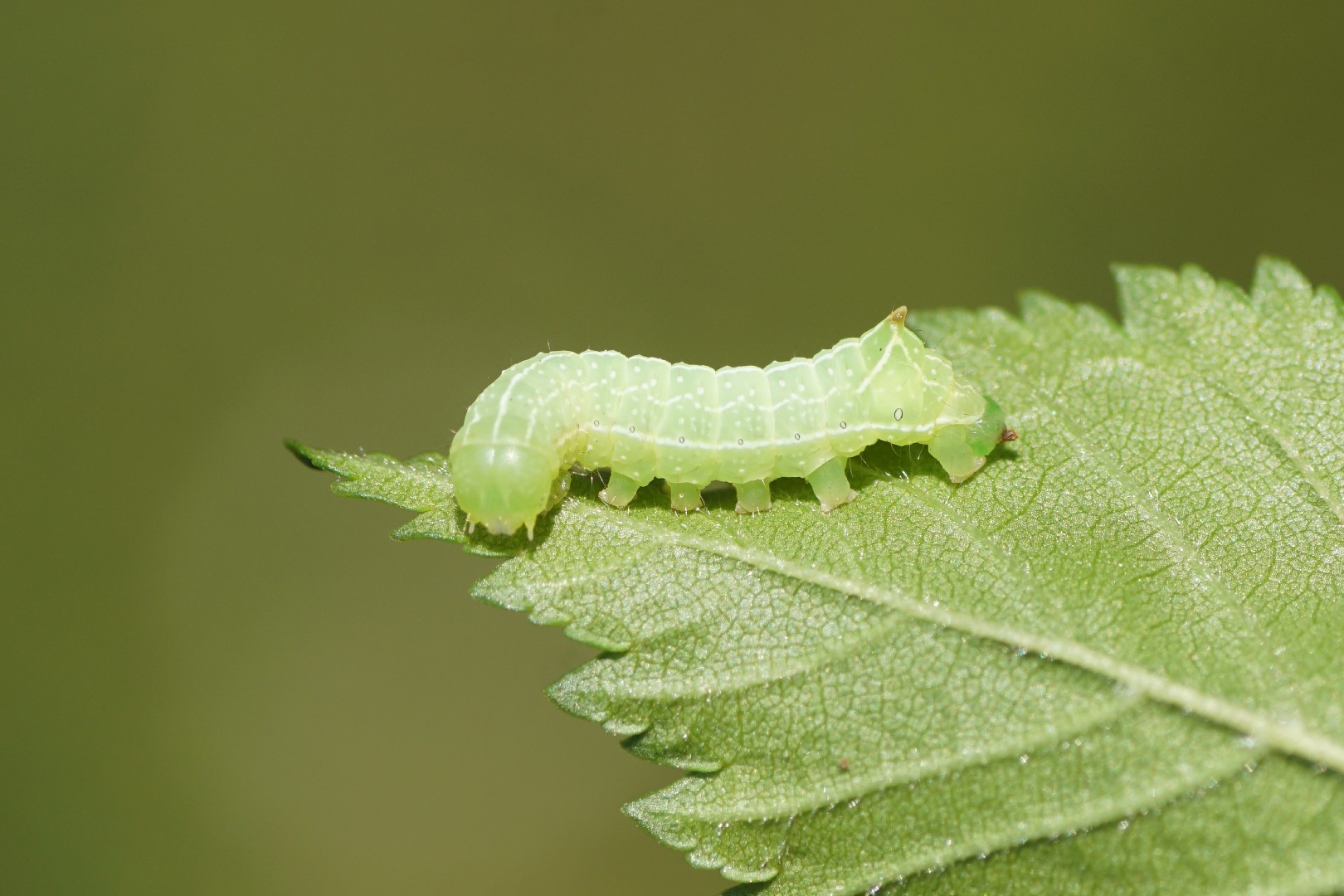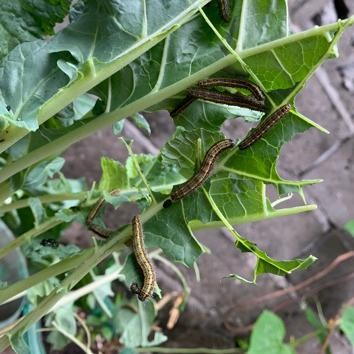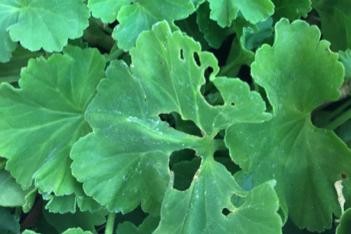What is the best way to water my Tree spinach?
Not only does the Tree spinach have certain preferences regarding how much water it receives, but it also cares deeply about how you provide that water. In fact, if you don't use the proper watering technique, you risk harming your tomatoes. The best way to water Tree spinach is to apply the water directly to the soil in a slow and gentle manner. You should not pour all of the water into the soil at once, and you should not do overhead watering for your Tree spinach. Although you should water slowly, you should also water deeply to ensure that all of the soil in which your Tree spinach grows is sufficiently moist.
![more]()
What should I do if I water my Tree spinach too much or too little?
If you find that you have overwatered your Tree spinach and you are concerned about the associated risk of disease, you should intervene immediately. Often the best approach for an overwatered Tree spinach is to uproot it from its current growing location. Once the plant is out of the ground, you can allow its roots to dry a bit before planting it in a new growing location. Ensure that the new growing location has soil with good drainage. If you grow in pots, you may also want to move your plant to a pot with more or larger drainage holes. In the case of underwatering, all you will need to do is increase the frequency with which you supply water to your plant.
![more]()
How often should I water my Tree spinach?
Overall, Tree spinach requires a significant amount of water throughout the growing season. To meet that high water need, you'll need to water early and often throughout the spring and summer. During the earlier parts of the growing season, you should water your Tree spinach about once or twice per week. As the season progresses, you should increase your watering frequency. You may need to water it twice per day or more during summer, depending on the weather. After your Tree spinach have gone through their major seasonal growth phases, you can reduce the frequency of your watering to about once per week until the end of the growing season.
![more]()
How much water does my Tree spinach need?
Since Tree spinach are incredibly popular, with many professional and amateur gardeners growing them successfully, we have a pretty clear idea of how to care for these plants. That understanding includes specific knowledge about the precise volume of water an average Tree spinach should receive. Generally, Tree spinach will require about 1 - 1.5 inches of water per week. That volume should be dispersed evenly through your weekly watering. As the weather gets warmer, you may need to supply more water, but in most cases, two inches per week is a good baseline amount.
![more]()
How can I tell if i'm watering my Tree spinach enough?
Underwatering and overwatering can both occur as problems for your Tree spinach, and both these problems can manifest with similar symptoms. For example, foliage discoloration and wilting can both result from either overwatering or underwatering. When your Tree spinach is underwatered, its leaves will be curling and drooping at the beginning. You will see a bunch of leaves turn less vigorous. Underwatering is also likely to cause stunted growth and poor overall development as both the flowers and this plant require a high amount of water. Overwatering is more likely to lead to disease, including rot. Overwatering may also lead to unpleasant smells rising from your plant's soil. The symptoms of underwatering will show up quicker than overwatering. Overwatering can also be evident in soil conditions. Mainly, if you notice a lot of standing water or waterlogged soils, overwatering is likely to occur.
![more]()
How should I water my Tree spinach through the seasons?
As alluded to above, your Tree spinach's water needs will repeatedly change throughout the seasons. During most of spring and summer, you should water your Tree spinach about once every week. As the heat of summer arrives, you should plan to increase your watering frequency to once or twice per day. In the late summer and fall, towards the end of the harvest period, you can reduce your watering frequency to about once per week. After harvest has ended, you can cease watering as your Tree spinach has reached the end of its life cycle and will require no further soil moisture. The maintenance schedule of Tree spinach will require you to alter the amount of water you provide depending on the plant's current growth stage. Early on, especially if you grow your Tree spinach from seeds, you'll need to provide water often enough to maintain consistent soil moisture, which encourages root development. When the plant becomes old enough to produce flowers, it will likely need even more water. During the fruit development growth stage, your Tree spinach will likely need the most water out of any growth period, at times requiring water more than twice per day. Following that phase, the water needs of Tree spinach will decline significantly.
![more]()
What's the difference between watering Tree spinach indoors and outdoors?
Whether you grow Tree spinach indoors or outdoors can also play a role in how you water them. Tree spinach that grows outdoors may receive water from natural rainfall, which will reduce the amount of supplemental water you should supply. However, it is incredibly rare for rainfall to adequately replace your watering entirely. Plants that grow indoors, along with any Tree spinach that grows in a container, will need to be watered more frequently than those that grow in the ground outdoors. If you choose this route, please make sure that the plant gets enough water by checking the soil moisture within your pot often to keep your Tree spinach healthy.
![more]()
Is pruning necessary for my Tree spinach?
Tree spinach is a kind of annual plant so it doesn't need much pruning. You only need to cut off and clean the diseased, yellow or dropped leaves and stems during its growing period. This will help your Tree spinach to stay away from pathogens infection.
![more]()
How do I prune my Tree spinach?
During the growth of the plant, yellowing, drying and spotted leaves are produced, and these spotted and discolored leaves need to be trimmed off. If the whole piece of leave is discolored or infected, you will need to cut it off completely. In other situations, you will only need to cut off the discolored or infected part on certain leaves. Tree spinach above the ground will die and dry up in the winter, and the dead plants need to be cleaned up.
![more]()
Are there any cautions I should be careful with when pruning my Tree spinach?
Tree spinach leaves are delicate, so take care not to score or bruise them. Unless the leaves are withered or heavily discolored, do not prune the leaves from the lowermost branches unless they’re damaged. They typically grow the largest, so they supply the plant with critical energy to keep it growing right. Please prevent the wounds from water after pruning until they are fully recovered. Remember always sterilize the tools before pruning. When the pruning is finished, please throw all the waste leaves and stems into the trashbins to avoid diseases and bugs.
![more]()
Are there any tips for pruning my Tree spinach?
Sterilize all the tools before pruning; unclean tools will pass pathogens to the plant through wounds; Prune on sunny days because the new cuts will be infected by pathogens if they're distained by rain or water. Throw all the waste leaves and stems into trashbins, they will easily rot and attract diseases and bugs
![more]()
When should/shouldn't I prune my Tree spinach?
Expect to prune your Tree spinach every week if it’s growing well or every two weeks if it grows slowly. It is always good to prune it on sunny days because if you prune it on rainy days, the rainwater will distain the cuts and cause the whole plant to be infected.
![more]()
What should I look for when pruning my Tree spinach in different seasons?
Because Tree spinach is an annual plant, the pruning should take place basically during the seasons that the plant grows rapidly. During the growth of the plant, yellowing, drying and spotted leaves are produced, and these spotted and discolored leaves need to be trimmed off.
![more]()
How much sunlight does Tree spinach need to grow?
Exact needs vary, but a minimum of 6 to 8 hours per day is a good rule of thumb for Tree spinach to grow and produce fruit.
![more]()
What type of sunlight does Tree spinach need?
Tree spinach requires full sun, meaning that it should be grown in a location that gets direct sunlight that isn’t blocked by obstacles such as trees, fences, or buildings. In general, the faster the plant grows, the more hours of sunlight it will need. Morning sun is best for photosynthesis.
![more]()
Should I protect Tree spinach from sun exposure?
Tree spinach should not need to be protected from the sun in most climates. Those who live in a desert or near the equator may find that the sun is too harsh for the types of plants they want to grow, but this is the exception.
![more]()
What will happen if Tree spinach doesn't get enough sunlight?
All plants need sunlight to convert into energy. Plants that have a short growing season need even more light and energy than those that grow slowly, as they need to complete all their processes to grow and produce fruit within just a few months. The first symptoms of insufficient sunlight in Tree spinach are pale and yellow leaves that are not able to generate enough chlorophyll to keep their healthy green color. The leaves may eventually fall off, and new growth is small and weak. The plant may become leggy and sparse as it stretches toward the available light. Finally, without enough light the plant will not be able to produce large, high-quality edible leaves or fruit. Tree spinach needs to devote a lot of energy into growing leaves and fruits, so if there isn’t enough light available for it to convert, the harvest will suffer.
![more]()
What will happen if Tree spinach gets too much sunlight?
Tree spinach can get sunburned from intense sunlight, especially when coupled with high temperatures and not having enough water. Afternoon sun tends to be most likely to burn plants. Scalded leaves develop faded patches of light brown to white on the areas at the top of the plant that are exposed to the most sun. They are especially vulnerable to this right after being transplanted from a shadier location to being in full sun. Transitioning plants gradually or providing them with a barrier while they are adjusting can help prevent sunscald in young plants. In many cases, Tree spinach develops leaves that are large enough to protect fruits from the strongest rays of the sun. However, if intense sunlight is in contact with fruits, they can also be damaged. Avoid over-pruning those protective leaves so that the fruits don’t get burned.
![more]()
Are there any cautions or tips for sunlight and Tree spinach?
Tree spinach may become unbalanced if it gets significantly more light on one side than the other. Ideally, you can plant your Tree spinach in a location away from obstacles that might block light, and where the distribution of sunlight is even on all sides. Be careful about planting tall species next to those that grow closer to the ground. It may not be obvious when the crops are first planted, but over time the taller plants may begin to block the amount of sunlight that can reach the shorter plants. Morning sun helps to dry dew and precipitation, which helps prevent infection from diseases that can develop when water sits on the plant. If you are watering or irrigating your Tree spinach, this should be done in the morning.
![more]()
What is the optimal temperature for Tree spinach?
There is an ideal temperature range that makes Tree spinach feel at home. Under these temperature conditions, it's unlikely that you’ll have any issues with cold or hot damage to the foliage, but changing leaf colors can absolutely be a sign that Tree spinach isn’t happy. Try to keep your Tree spinach well within its preferred range of 70-85℉(21-30℃), but don’t panic if the temperature creeps up past 85℉(30℃) during the day or down to 70℉(21℃) at night.
![more]()
How can I protect Tree spinach from extreme temperatures outdoors?
If your Tree spinach happens to be planted outside, then there’s not much you can do to try to move it indoors. However, you can certainly provide cover in ways that will help it survive any extreme temperatures that may arise unexpectedly. For instance, you can always use a few stakes and some cloth to put together a shade tent that will block out much of the sun’s intense heat from direct sunlight exposure. Similarly, Tree spinach can be protected from the extreme cold and especially chilly winds by building a small greenhouse around the plant, which will create a greenhouse effect and warm the plant up. This can be done using garden stakes and any sort of clear or translucent plastic you may have around; if you have greenhouse plastic such as polycarbonate laying around, this works perfectly. Remove the greenhouse once temperatures warm up to 40℉(10℃) at night.
![more]()
Does Tree spinach need different temperatures in different seasons?
Generally speaking, Tree spinach needs to stay within its preferred temperature range all year long. However, that doesn’t mean that care should stay the same all year long. During the warmest months of the year, Tree spinach will need a little extra shade and a bit more of a breeze to help it cope with the hottest days. On the other hand, it may need to be moved away from chilly windows and doors during the cooler months in climates where temperatures drop below 40℉(10℃) at any point in the year.
![more]()
What is the best way to maintain the right temperature for my Tree spinach?
Keeping your Tree spinach at the right temperature can be fairly simple. Depending on where you grow it, Tree spinach can be fairly easy to accommodate. For indoor growing, you can easily move the plant to different locations within your indoor space that best meet its temperature requirements. Avoid placing it near air conditioning vents, heaters, doors that open frequently, or drafty windows. It is a little more difficult to control the temperature around your Tree spinach if it’s grown outside. Of course, if it’s planted in a pot, you can simply bring it indoors when the temperatures outside get too hot or too cold for Tree spinach, but otherwise, you may need to take different measures to protect it from extreme heat or cold that may damage it irreversibly. Try placing Tree spinach under cover to protect from both the harsh sun that can overheat it and any cold wind that could be potentially deadly for your plant.
![more]()
Why do I need to fertilize my Tree spinach?
Tree spinach is grown for its edible leaves and shoots, so it needs sufficient nutrients to provide great flavor and a large harvest. If this plant is grown in soil that does not have enough nutrients, its leaves and stems will be underdeveloped, and flavors are likely to be inferior to a plant that is grown in more favorable conditions. Stems are likely to be thin and the taste may be bitter. Fertilization is especially important if this plant is grown in a container, since container plants don't have as much access to organic matter as those grown in the ground. Supplement your Tree spinach with a balanced liquid fertilizer if it is grown in a pot.
![more]()
When is the best time to fertilize my Tree spinach?
There are several points during the growing season that you should apply fertilizer to benefit your Tree spinach. The initial application occurs when you prepare the ground to be planted, at least 2 to 8 weeks before planting, amend the soil thoroughly with nutrient-rich organic material such as compost or manure. Amend the soil again at planting time, using the same method. After your seedlings emerge, wait until they reach around 2 inches tall before applying the next dose of fertilizer. After that, you can continue to regularly feed your Tree spinach with rich organic matter or a commercial fertilizer until you harvest. A typical schedule would be to fertilize every two to three weeks. It is also a good idea to add a layer of compost or manure around the plant to provide a continuous supply of nutrients.
![more]()
When should I avoid fertilizing my Tree spinach?
Avoid Fertilizing Tree spinach when soil conditions are dry. This plant requires plenty of water, and will not be able to properly absorb nutrients if there isn't enough moisture in the soil. Also avoid using chemical fertilizers on this plant outside of the growing season, since that risks introducing more fertilizer than the plant can use. Excess chemical fertilizer ends up in groundwater and can contaminate soil, so be sure to fertilize only during the active growing periods.
![more]()
What type of fertilizer does my Tree spinach need?
Tree spinach should be provided with a balanced fertilizer, although it may not need much fertilization if the soil is rich enough. Organic fertilizers such as fish emulsion, well-rotted manure, and compost or compost tea work very well for growing Tree spinach. You may prefer to use a fertilizer with a slightly higher nitrogen ratio compared to other macronutrients, as nitrogen supports strong foliage development. The NPK number on the fertilizer label will be the best way to understand the ratio of the three macronutrients nitrogen, phosphorus, and potassium in the mixture. The best way to determine what kind of fertilizer works best for Tree spinach in your garden is to perform a soil test and then compare the results against the requirements for successfully growing the plant.
![more]()
How do I fertilize my Tree spinach?
Mix compost or other organic fertilizers into the soil prior to planting. This provides seedlings a great start so they can develop a healthy root system. At the beginning of the growing season, layer compost or other organic fertilizers and soil amendments around the bed so they can release nutrients into the soil over time. A slow-release granular fertilizer can also be sprinkled onto the soil if needed to supplement nutrients and support leaf development. Liquid fertilizers could be used during the regular watering cycle, but be careful when using chemical fertilizer products that you do not use too much and burn your Tree spinach.
![more]()
What happens if I fertilize my Tree spinach too much?
Overfertilization of Tree spinach can cause the plant to become stressed and burned. Tree spinach may die altogether, especially if excess fertilizer is combined with dry and/or hot conditions, so always remember to water thoroughly when fertilizing this plant. Excess fertilizers cause a condition called fertilizer burn, which happens when too many salts build up in the roots or other parts of the plant. This is less common when using organic fertilizers compared to chemical fertilizers, so it is always recommended to use natural materials if possible. Too much fertilizer causes the plant to become stressed, resulting in yellowing and wilting foliage. It is easier to avoid this condition than to treat it after it has already happened, but you can flush the soil with a lot of water if you have accidentally overfertilized. Tree spinach is resilient and can come back from unhealthy conditions once the problem is rectified.
![more]()




























 Watch how sunlight gracefully moves through your garden, and choose spots that provide the perfect balance of light and shade for your plants, ensuring their happiness.
Watch how sunlight gracefully moves through your garden, and choose spots that provide the perfect balance of light and shade for your plants, ensuring their happiness. 








